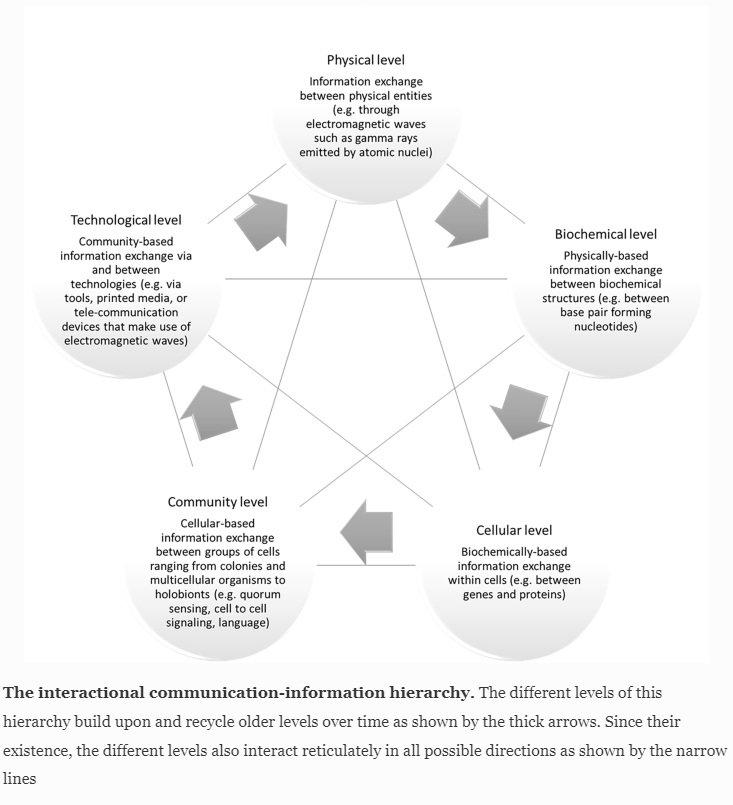Communication
Refer to the Urban Assemblage paper for some ideas and the discussion.
This concept refers to the notion of Language
Definitions
Communication is "the evolution of physical, biochemical, cellular, community, and technological information exchange".
Language is "community communication whereby the information exchanged comprises evolving individual and group-constructed knowledge and beliefs, that are enacted, narrated, or otherwise conveyed by evolving rule-governed and meaningful symbol systems, that are grounded, interpreted, and used from within evolving embodied, cognitive, ecological, sociocultural, and technological niches".

Gontier, Nathalie. ‘Defining Communication and Language from Within a Pluralistic Evolutionary Worldview’. 41, no. 3 (2022): 609–22. https://doi.org/10/gsdmqx.
Communication depends on evolved biological functions that support communication. The sender should have evolutionary adaptations for communication.
Frick, Ramiro, Leonardo Bich, and Alvaro Moreno. ‘An Organisational Approach to Biological Communication’. Acta Biotheoretica 67, no. 2 (2019): 103–28. https://doi.org/10/gssp7m.
Key Concepts
- All living beings can communicate.
- All have subjectivity.
- All have sensing and communication abilities (cf. #sentience (Private) )
- Abiotic systems also exchange information
- Artificial and technical systems become integrated into ecosystems, places and communities and modify existing sensory exchanges, sometimes for the worst.
Cf. Weston Anthony
Issues
Following research in postcolonial studies. Once you have respect, it is not clear how to have better relationships without better communication. For example, as relevant for Design, animals are coordinators and co-operators in the construction of niches.
Biosemiotics
Otálora-Luna, Fernando, and Elis Aldana. “The Beauty of Sensory Ecology.” History and Philosophy of the Life Sciences 39, no. 3 (2017): 20. https://doi.org/10/gkdwsp.
Sensing has no intrinsic meaning outside the context of an entire system, which is always circumstantial.
We do not know, nor have we any means of knowing, whether our conception of the environment is in conformity with reality (Hertz 2003) any other than in a subjective respect. However, what we know is that sensing produces objective records of such subjective reality. It is not necessary that such symbols be in strict conformity with matter because they only represent part of the reality and furthermore, because they are subject to diverse interpretations, which depend on aesthetic criteria.
Communication with Other Animals
Human-Nonhuman Communication
Communicating with animals via music, recommended by Weston Anthony
Nollman, Jim. Dolphin Dreamtime: The Art and Science of Interspecies Communication. Toronto: Bantam, 1987.
Communication with Alien Lives
References
On the importance of touch:
Mondémé, Chloé. ‘Touching and Petting: Exploring “Haptic Sociality” in Interspecies Interaction’. In Touch in Social Interaction. London: Routledge, 2020.
References
On animal minds, including mid reading and communication.
Andrews, Kristin, and Jacob Beck, eds. The Routledge Handbook of Philosophy of Animal Minds. Abingdon: Routledge, 2018.
Backlinks